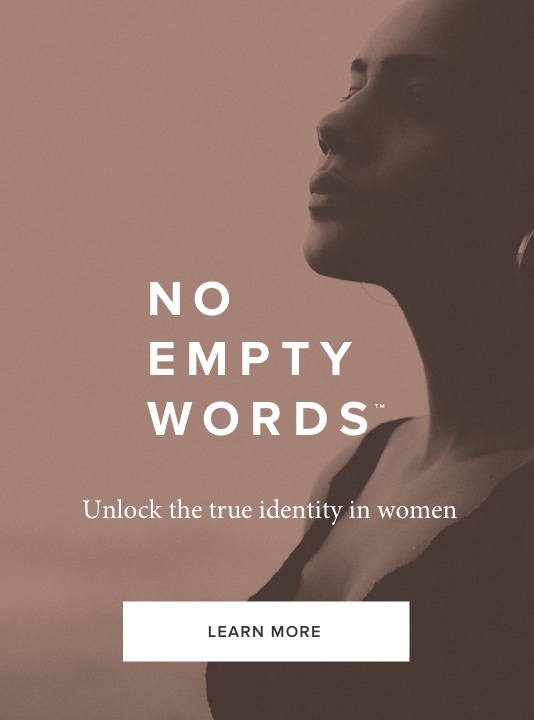“Wait, please don’t put that there,” I asked with a shy, quiet tone.
“You’re going to love it, I promise,” said my new roommate as she hammered holes into our living room space to hang a giant painting of fish.
Fish!
Every time someone walked into our new home, these fish with their strange eyes and bright colors would be there to greet them.
I had diplomatically asked her multiple times to let us make the decision together about the décor of our new shared space but, she decided her way was the best way.
As we began our new living situation, going from strangers to friends, I kept feeling like I was being steamrolled. Instead of taking responsibility for stating my boundaries, I became bitter. I talked negatively about my new roommate which stunted our ability to become good friends. We were on opposite sides, with me playing the part of a compliant friend to keep the peace and her assuming everyone would always like what she liked.
You may ask yourself, who was at fault in this situation?
Easy answer: we both were.
Boundaries are difficult in any relationship, and in friendship, we often have to walk a tightrope to balance our give and take. We may find ourselves asking questions like:
What’s the difference between meeting the needs of my friends and being taken advantage of?
When do I need to take a step back in a friendship that feels on the edge of unhealthy?
Creating boundaries is important for the longevity and life of our friendships and we are each going to experience different thresholds for giving and limits to what we can take.
There is no one answer to these questions but there is something to consider: you are in control of how much you give or take in a friendship.
If you have started to harbor bitterness towards a friend or feel trapped in a needy friendship, you probably played a role in blurring the boundaries. Don’t worry, you don’t have to stay stuck in this unbalanced relationship. But now you are responsible for the hard work of creating boundaries.
6 Steps to create healthy boundaries:
These steps are adapted from Boundaries, a book by Dr. Henry Cloud and Dr. John Townsend. A must-read!
1. Name the triggers for the unhealthy boundaries
Each time my roommate disregarded talking to me before inviting people over or changing our home in some way, it made me feel disrespected. She, on the other hand, felt really good about her decisions but didn’t feel great about the ways I passive-aggressively confronted her. Start your conversation by identifying where things usually go awry.
2. Name the conflict
Our conflict was my failure to see that I needed to voice clear boundaries and her failure to respect my input. Identify the conflict and recognize where you both have played a role in blurring boundaries.
3. Understand the roots
Knowing the foundation of your friend’s boundaries will help you understand the root of their actions. My roommate grew up in a family that took what they wanted, they were abrasive and controlling. It was not abnormal for her to do as she pleased. I grew up always afraid of confrontation and often let people “walk all over me.” My go-to mode in conflict was to bottle things up inside and resent people for not understanding me.
4. Take ownership
Be honest and apologize for your part. Take responsibility for your role in the conflict.
5. Identify what is actually needed and set the boundary
Don’t just assume that healthy boundaries naturally happen after forgiveness is given—you have to make a plan to act on your new information. Talk about what you actually need. The fish painting wasn’t so bad over time, but what I really needed was a good friend. I thought she was going to want us to make every decision together because we would be so close—we’d think like best friends wanting the same things. What she needed from me was less passive-aggressive behavior. If I didn’t like something, she wanted me to tell her instead of having to guess why I was upset.
We agreed that if things didn’t change, then it was time we looked for different roommates. Make sure you let your friend know what your boundary is and what the consequences will be if they cross it again.
6. Renegotiate the relationship
Set new patterns and ground rules for a healthier relationship. My roommate and I decided we would live with different people. But up until move out day, she started spending more time with me at home. She made an effort to build in friend time like I wanted. I also tried to be honest with her and relax a little on my expectations for our relationship.
After we moved out, our friendship got a lot better. The boundary we needed was to live in separate homes. We left on a good note despite the difficult decision to create space between us.
Setting boundaries is always uncomfortable because we fear causing pain to someone we care about. But there can be just as much hurt and damage if we don’t communicate how our broken boundaries are hurting us, causing bitterness and hatred towards our friends.
“Appropriate boundaries don’t control, attack, or hurt anyone. They simply prevent your treasures from being taken at the wrong time. Saying no to adults, who are responsible for getting their own needs met, may cause some discomfort…But it doesn’t cause injury.” (Boundaries, Cloud and Townsend, 1992, 114).
It’s your responsibility to speak up; it’s not your responsibility to fix the conflict on your own. It’s your responsibility to “guard your heart” (Prov. 4:23); it’s not your responsibility to feel guilt for how they respond. It’s your responsibility to say “thank you;” it’s not your responsibility to pay them back.
Know your “no” and when you’re ready to say “yes”
A mark of godly friendship is “bearing one another’s burdens” (Gal 6:2). But just like the airplane oxygen mask, you need to make sure you’re breathing before you can assist someone else. Because not all needs are manipulative. Sometimes we have to set boundaries around legitimate needs because we cannot sacrifice at one time or another.
It’s okay to say no when you’re physically, monetarily, emotionally incapable of carrying another friend through something. Communicating your reason only goes as far as what is responsible to the friendship.
When you feel spiritually rested, secure and in a place of giving without threat to your sanity, you’ll notice there is room to say “yes.” You can’t stay in a season of “no” forever. Your friends will always need you to be there for them so knowing your boundaries will allow you to discern when to make sacrifices and when to lovingly decline.
Next Steps:
- Evaluate some of those triggers for you when boundaries have become blurred in the past.
- Make a list of some basic boundaries for you. For example, I have a boundary that I don’t pick friends up from the airport. It’s a long drive, it’s impossible to do with two kids, and I get so frustrated and angry with my friend for being stuck in traffic. It’s not worth it to put that on my friend when I could have just said “no.”
- Have the conversation. You know which one I am talking about. Setting boundaries feels like we are putting up impossible barriers but, boundaries actually create healthy guard rails that keep the friendship in a safe lane for a life-giving relationship.
We all have a different capacity for what we can give and what we can take. It fluctuates in different seasons. Your friendships are not stagnant. They change, their situations change. Continue the conversation, work to understand and always lean towards love.
Enjoyed it? Share it!
Bailey Hurley
Bailey T. Hurley is everyone’s favorite community cheerleader. With a life-long heart for hospitality, Bailey offers simple friendship habits to help women build meaningful, lasting relationships. She has written for publications like She Reads Truth, Deeply Rooted Magazine, Grit and Virtue and Salvation Army’s, Peer Magazine. You can also find her chatting all about friendship on Sally Clarkson’s podcast Life with Sally, Kristin Schell’s podcast At the Turquoise Table, and a dozen more. Bailey holds an MA from Denver Seminary in leadership. She leads a community group with her family, serving thirty men and women every week in their home. Plus, she hosts her own friendship workshops for the ultimate friend date experience. She currently lives in Denver, CO with her husband, Tim, and kiddos: Hunter and Liv.
But wait, there's more...




















